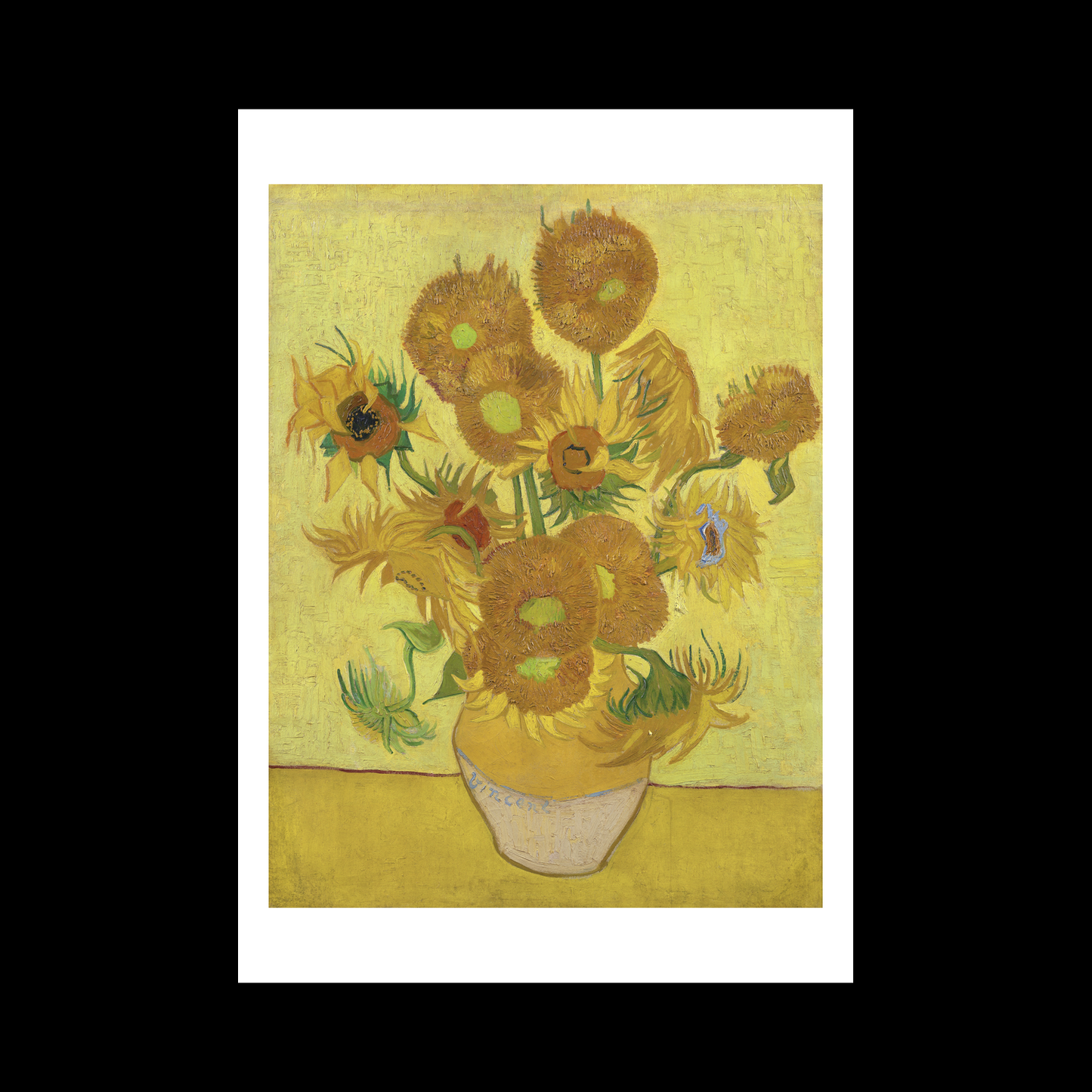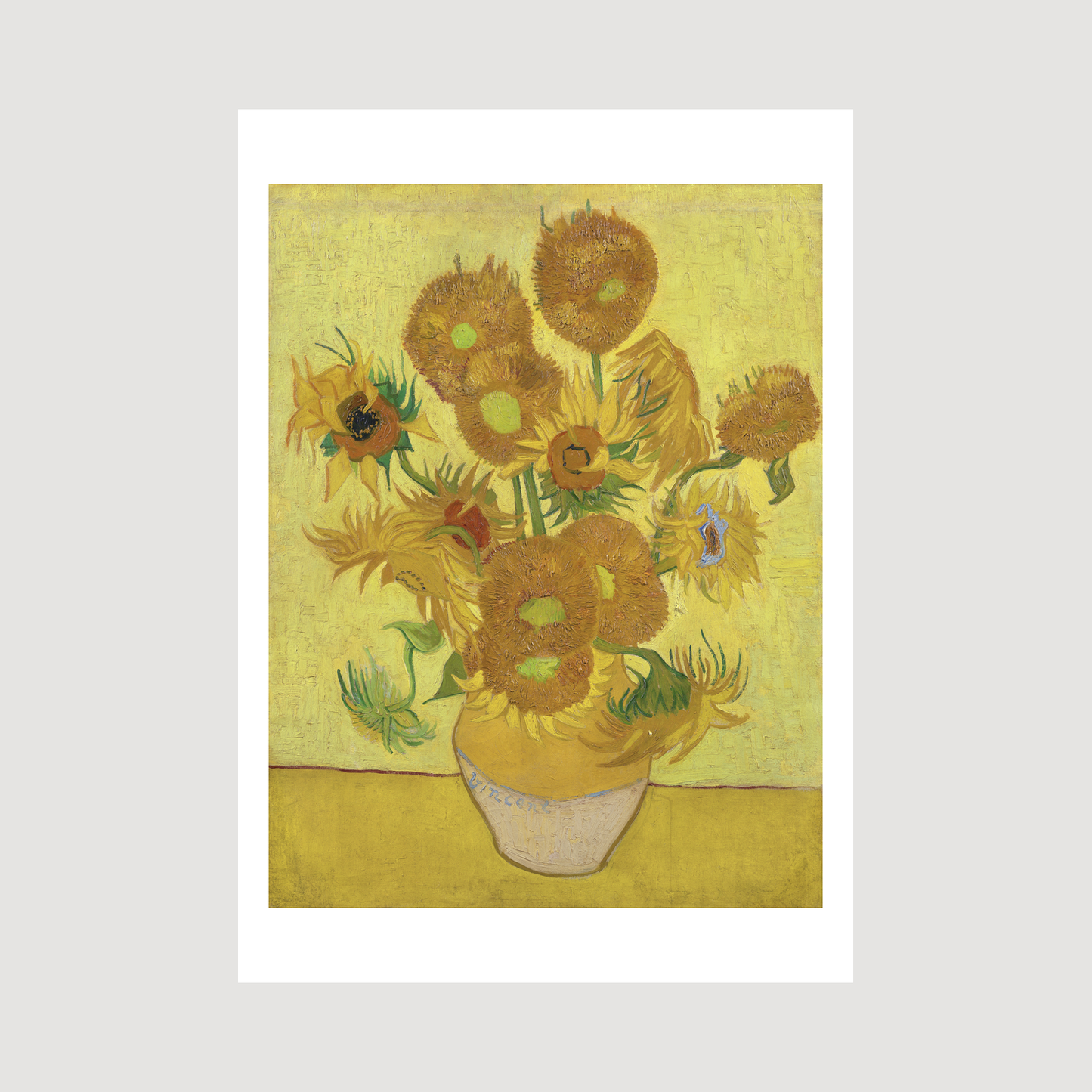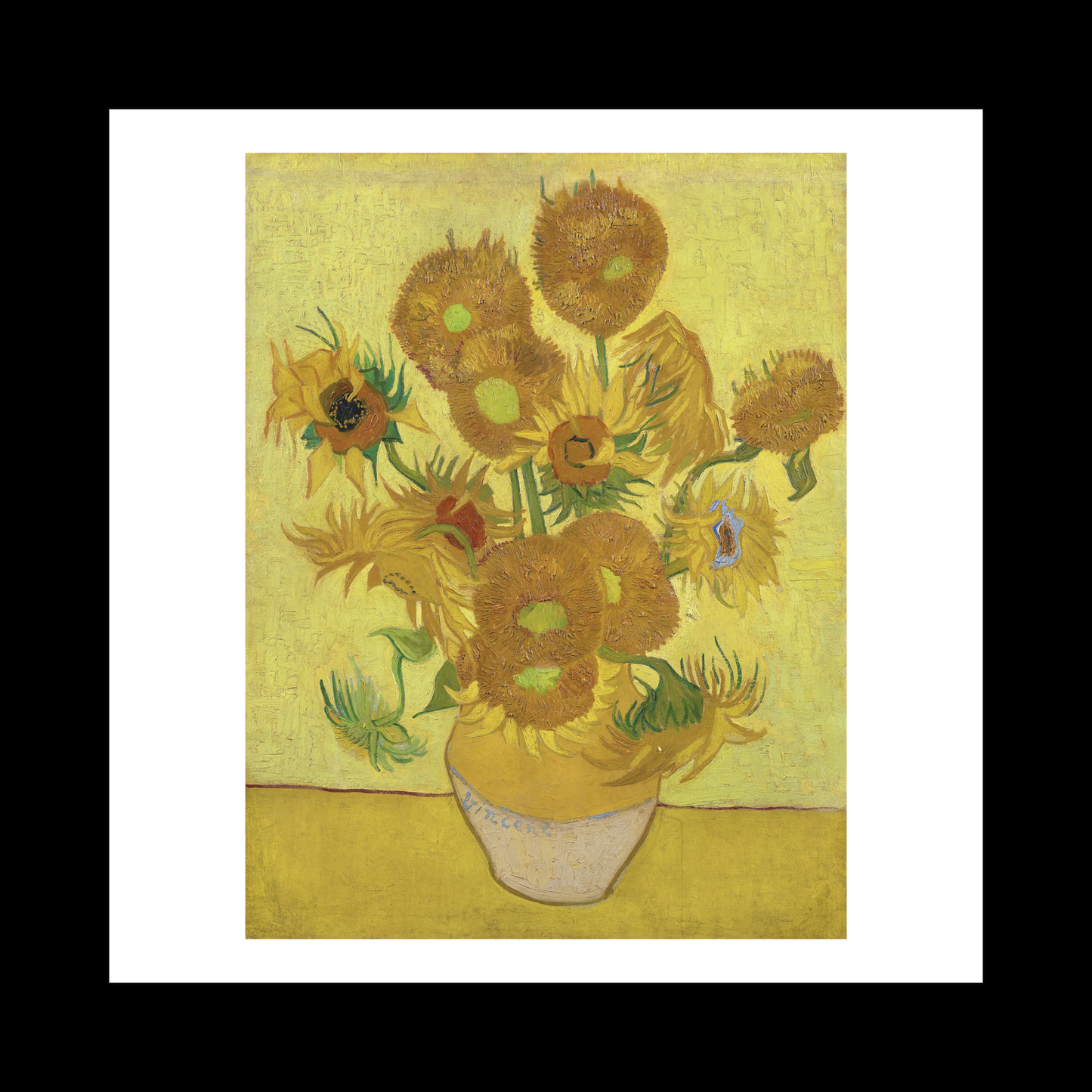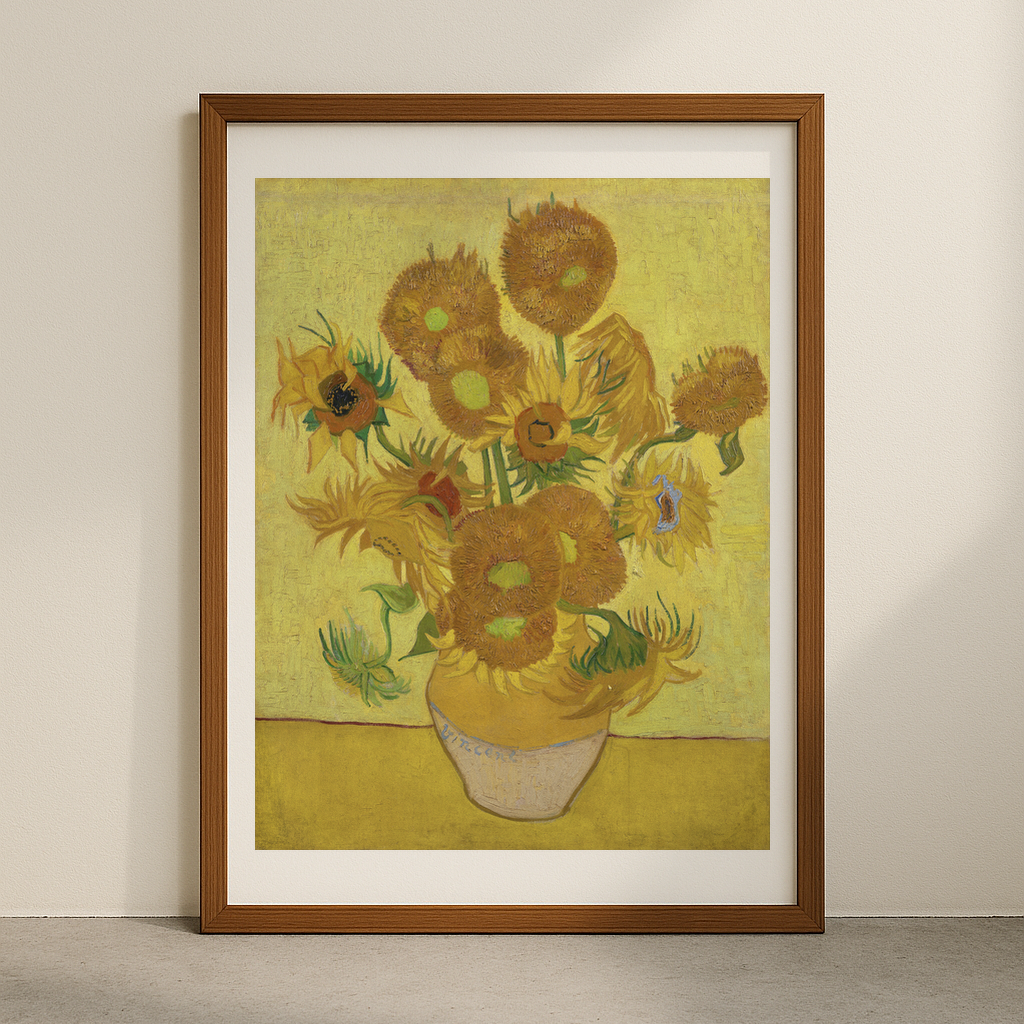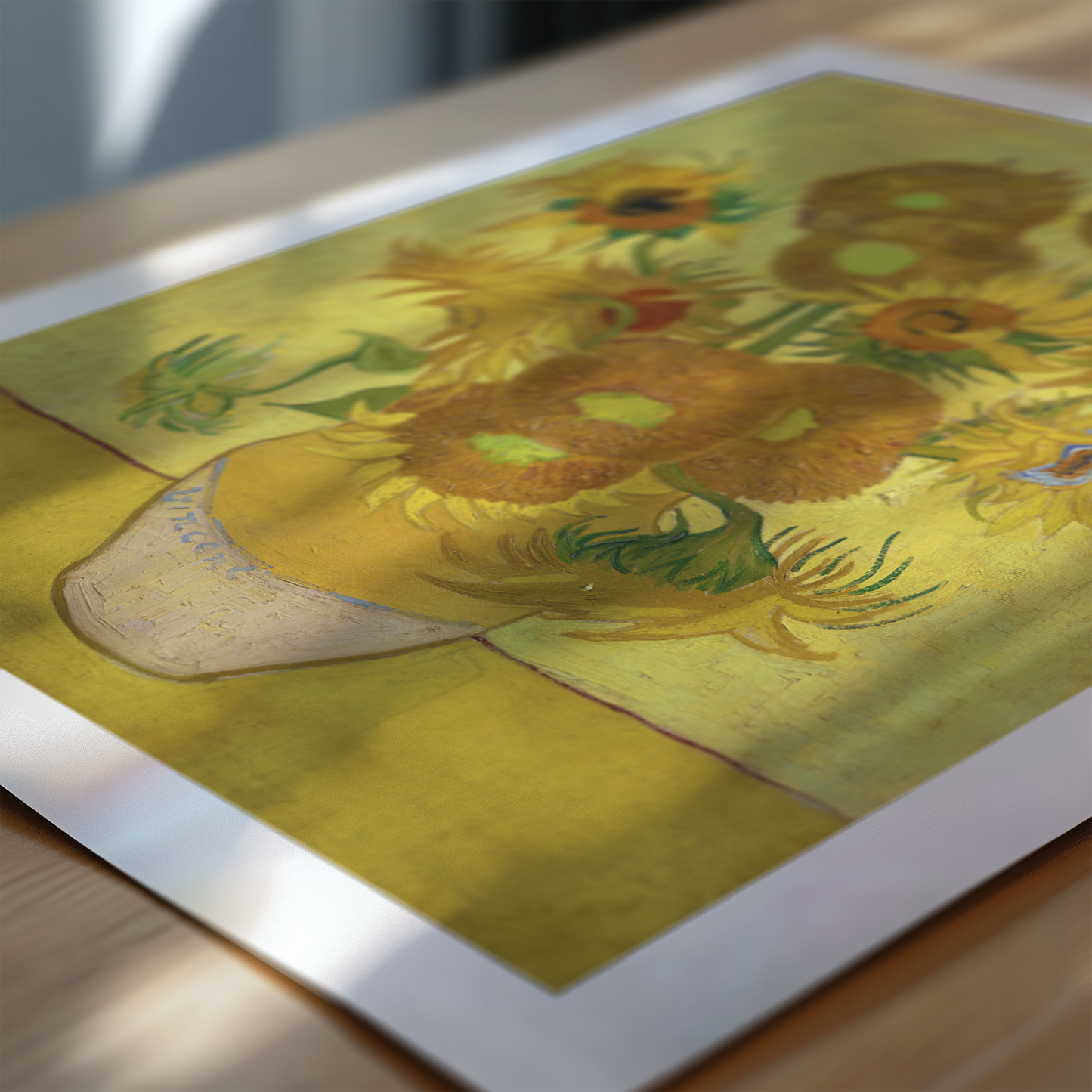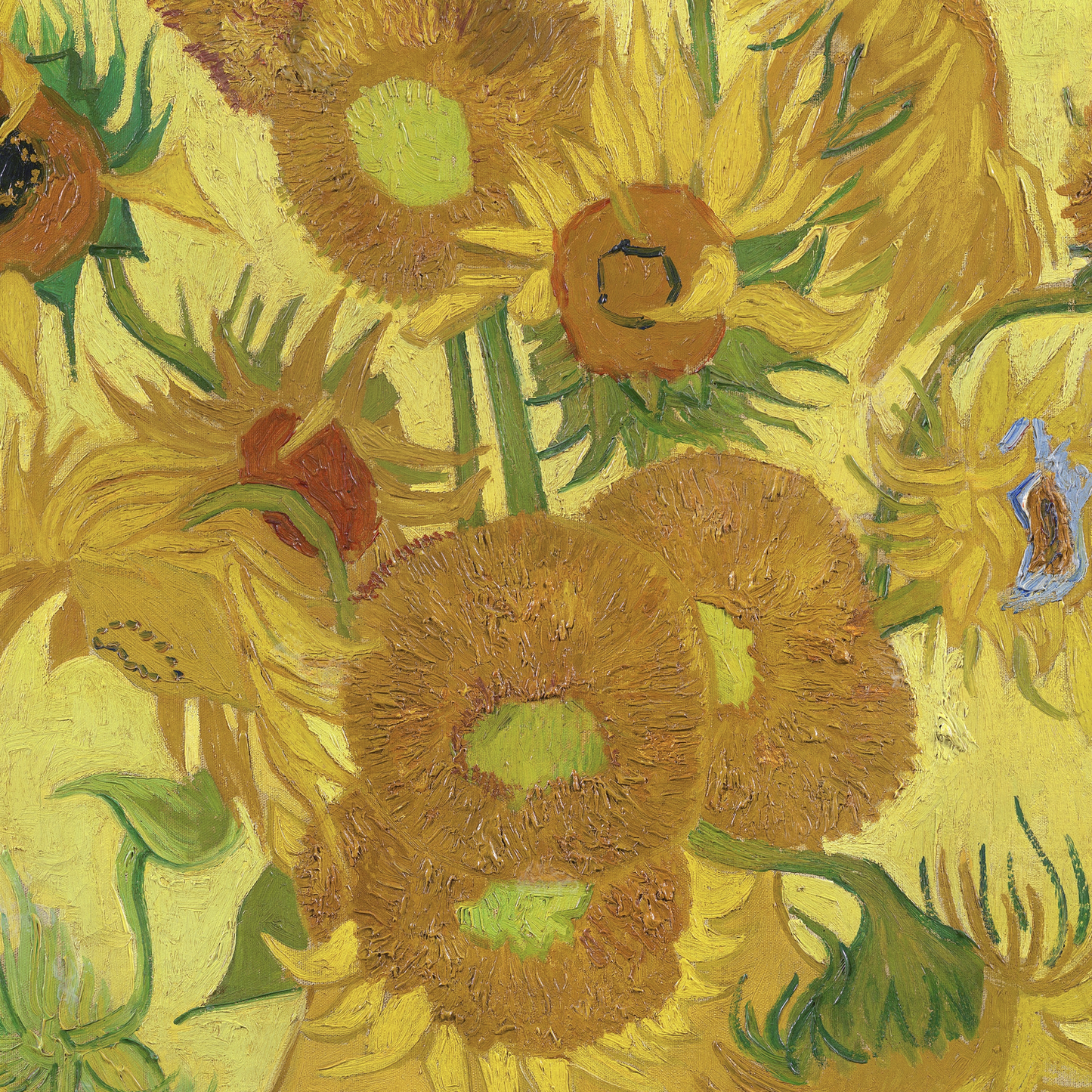1
/
of
6
Sunflowers (1888)
Sunflowers (1888)
Regular price
£12.45 GBP
Regular price
Sale price
£12.45 GBP
Taxes included.
Quantity
Couldn't load pickup availability
Vincent van Gogh's 'Sunflowers' (1888) stands as one of the most compelling still life paintings in Western art, showcasing fifteen vibrant sunflowers arranged in a yellow earthenware pot against a yellow background. The artwork's striking use of varied yellow hues, from pale lemon to deep golden ochre, demonstrates Van Gogh's masterful understanding of colour harmony and his innovative approach to painting technique. The bold, impasto brushstrokes create texture and movement, bringing the flowers to life with an almost three-dimensional quality.
Created during Van Gogh's time in Arles, France, this painting was part of a series meant to decorate the room of his friend and fellow artist Paul Gauguin. The sunflowers held deep personal meaning for Van Gogh, representing friendship, gratitude, and the warmth of Provence. Interestingly, he painted this version in one day, working with extraordinary speed and passion to capture the flowers before they wilted, using his characteristic wet-on-wet technique.
The composition reflects Van Gogh's unique artistic vision and his departure from traditional still life conventions. Rather than depicting perfectly fresh flowers, he included blooms at various stages of life - from fresh and vital to withering - suggesting themes of life cycles and mortality. The painting's emotional intensity is heightened by the artist's choice to eliminate shadows, creating a flattened space that emphasises the decorative quality of the flowers. This approach influenced numerous future artists and helped establish the foundations of modern art.
View full details
Created during Van Gogh's time in Arles, France, this painting was part of a series meant to decorate the room of his friend and fellow artist Paul Gauguin. The sunflowers held deep personal meaning for Van Gogh, representing friendship, gratitude, and the warmth of Provence. Interestingly, he painted this version in one day, working with extraordinary speed and passion to capture the flowers before they wilted, using his characteristic wet-on-wet technique.
The composition reflects Van Gogh's unique artistic vision and his departure from traditional still life conventions. Rather than depicting perfectly fresh flowers, he included blooms at various stages of life - from fresh and vital to withering - suggesting themes of life cycles and mortality. The painting's emotional intensity is heightened by the artist's choice to eliminate shadows, creating a flattened space that emphasises the decorative quality of the flowers. This approach influenced numerous future artists and helped establish the foundations of modern art.
